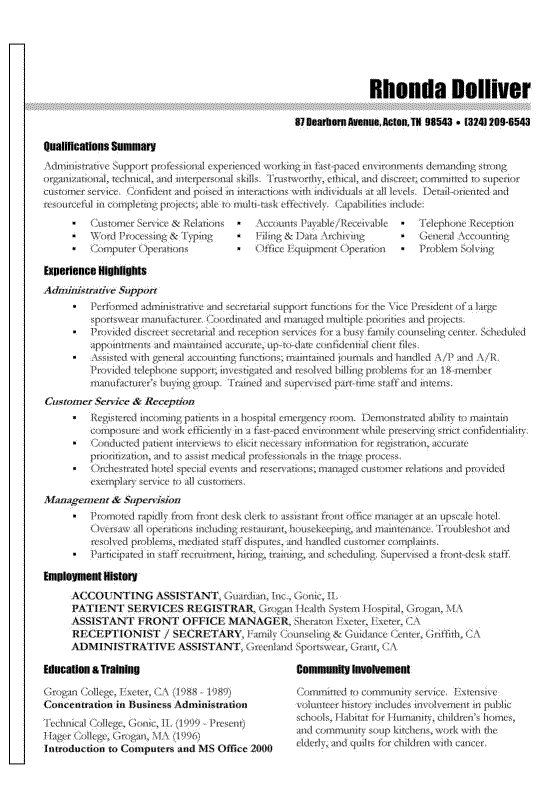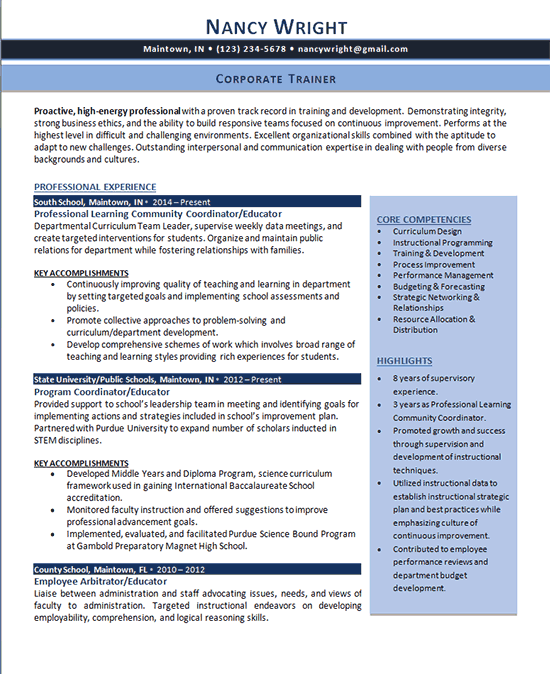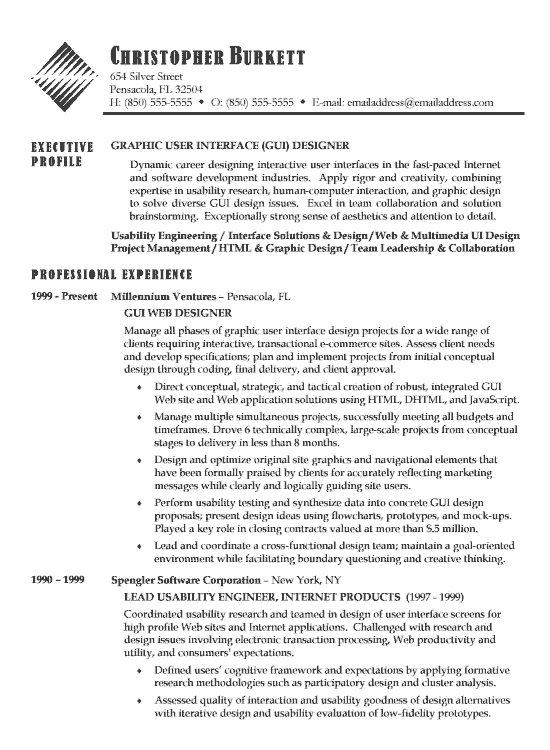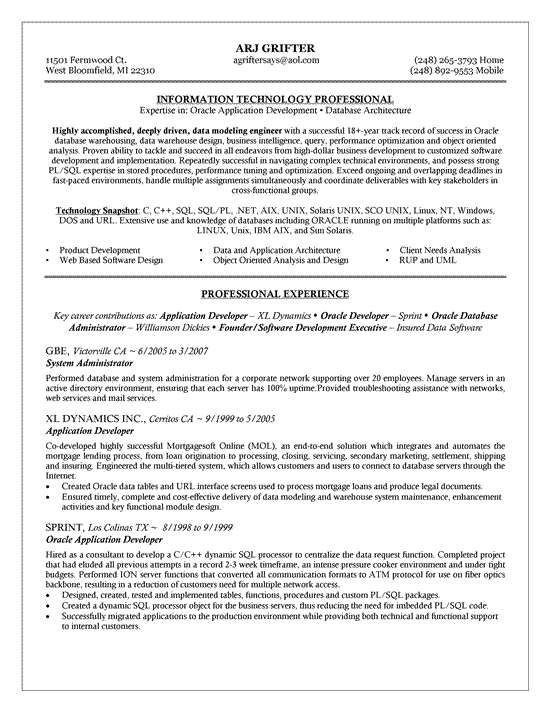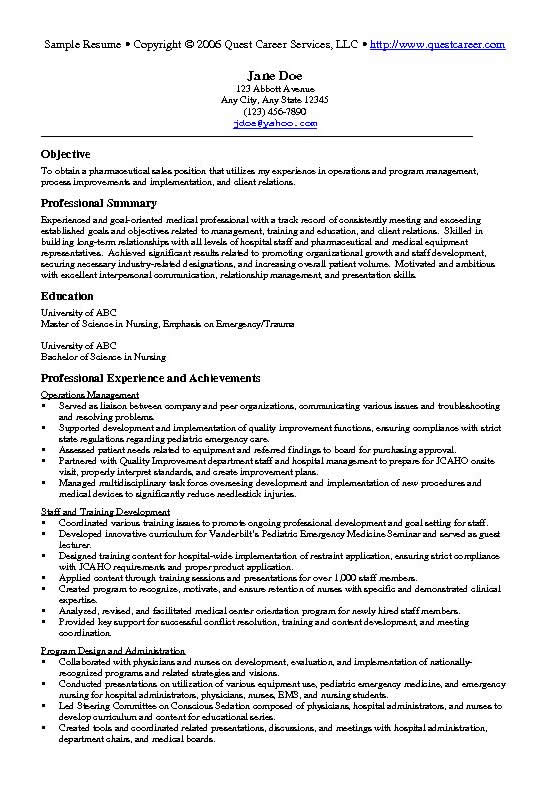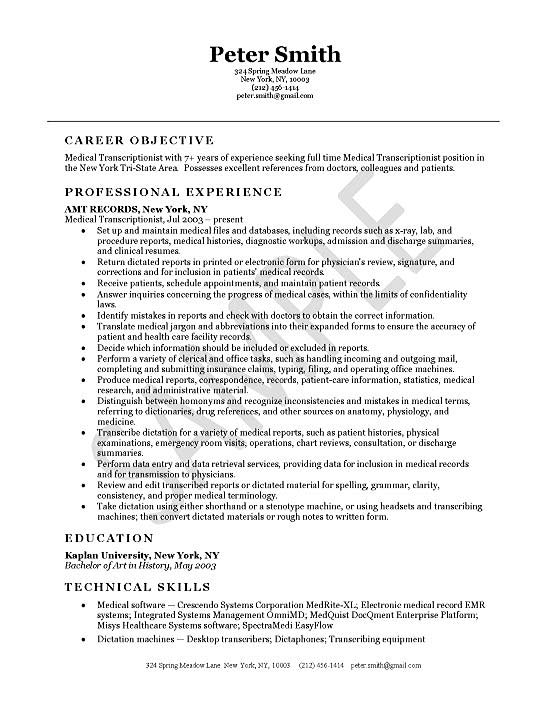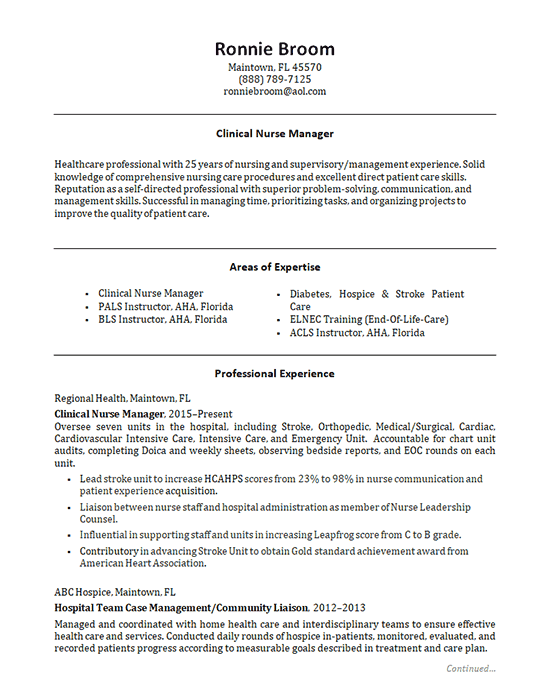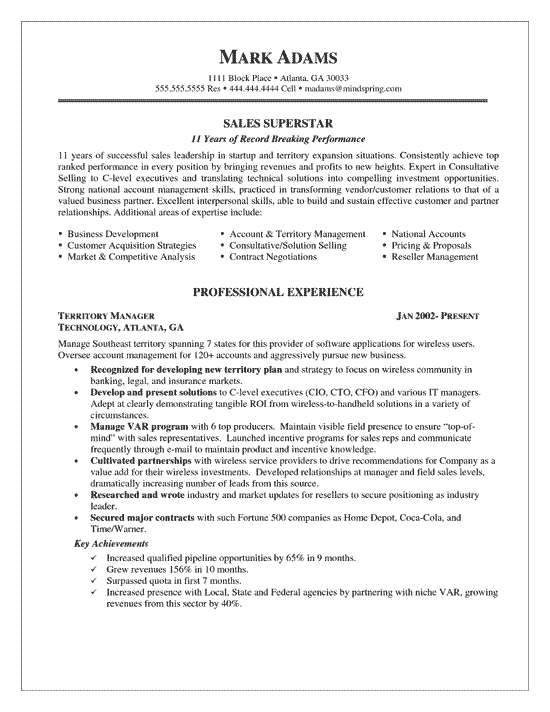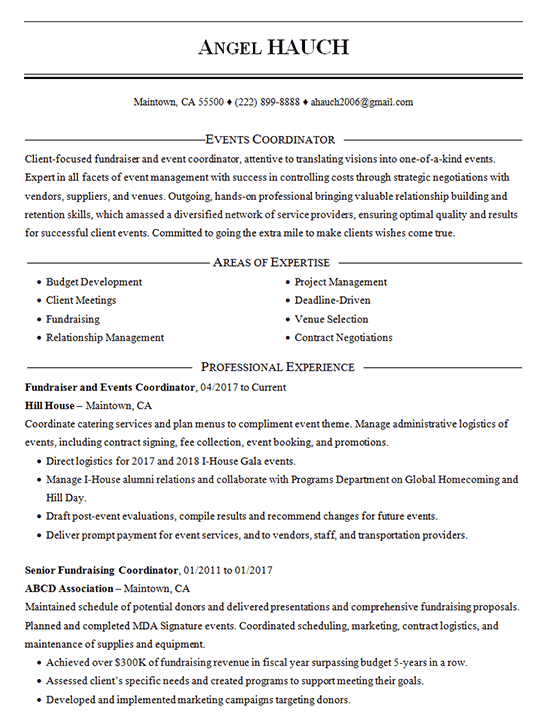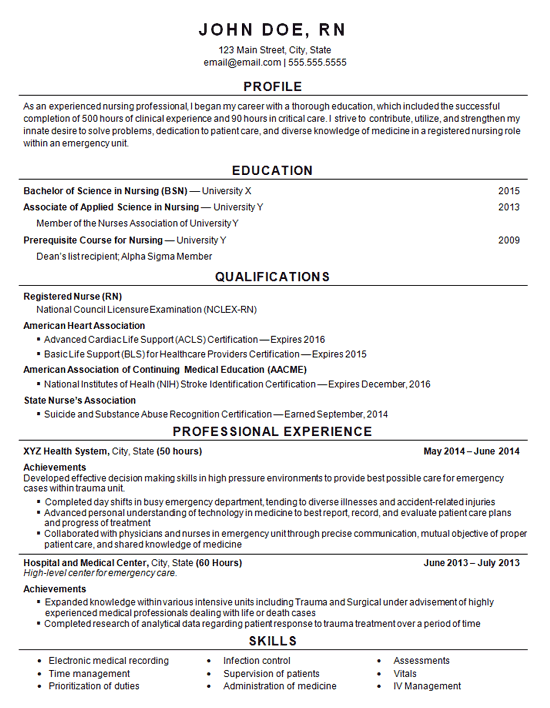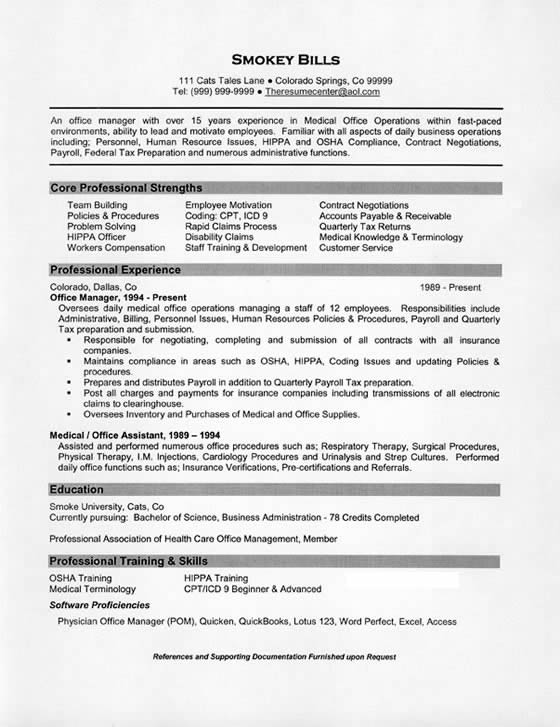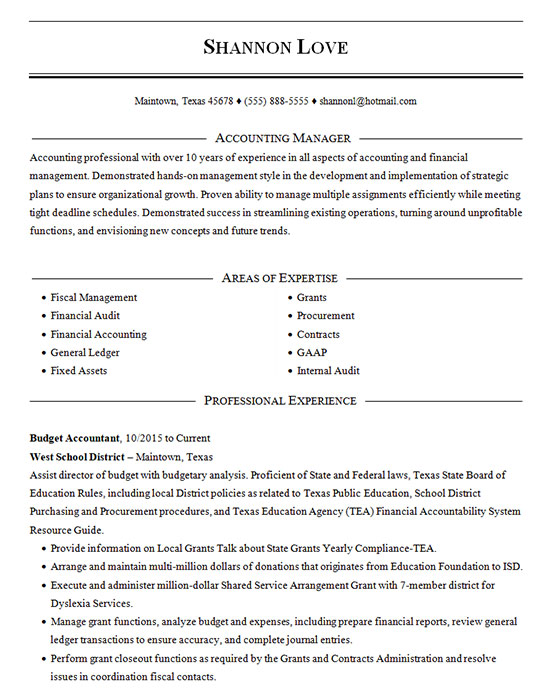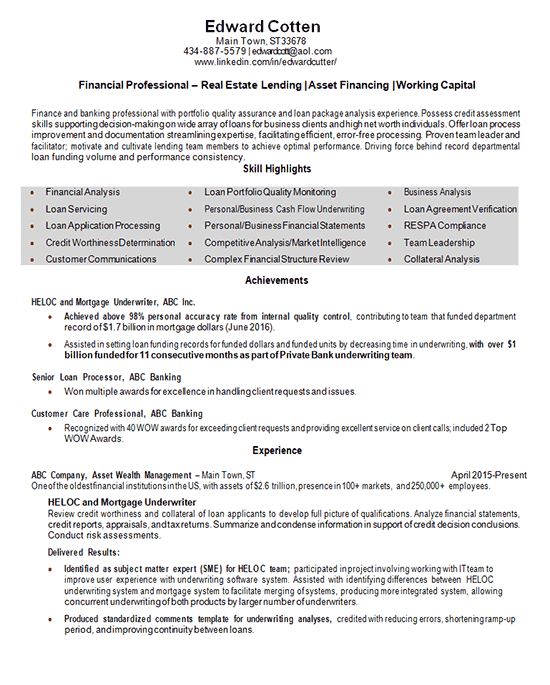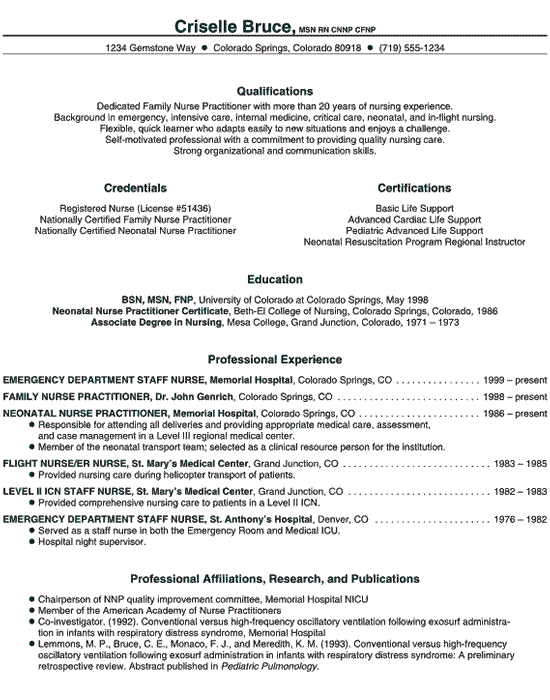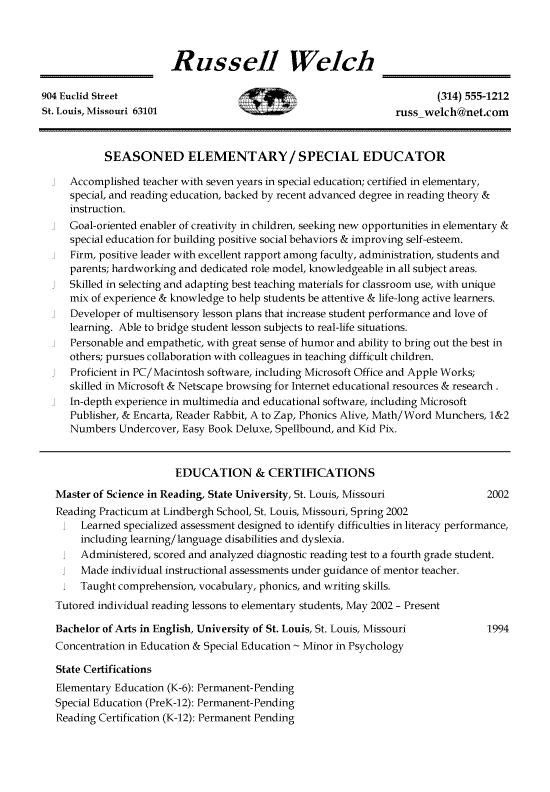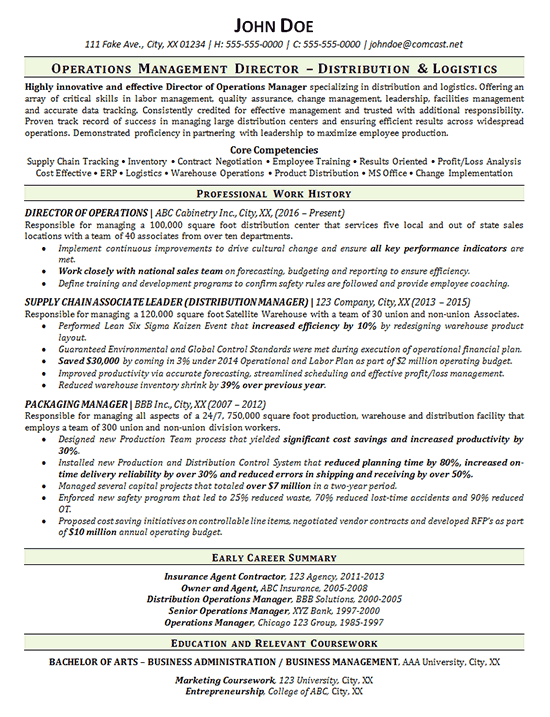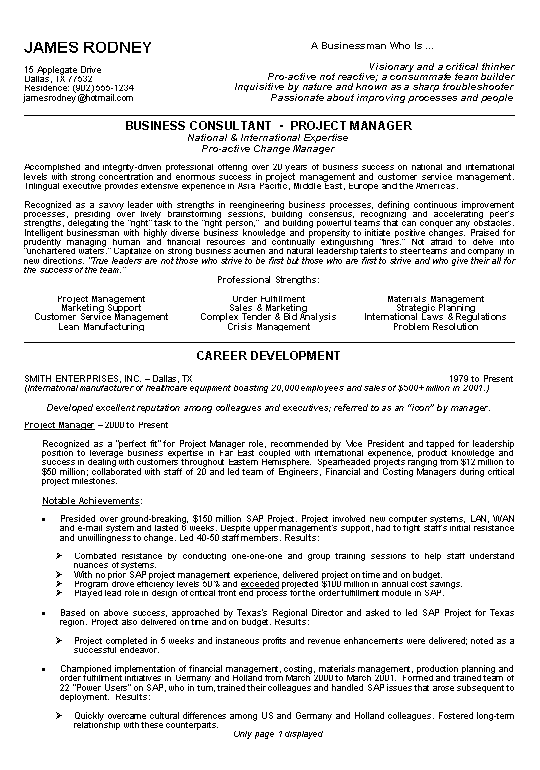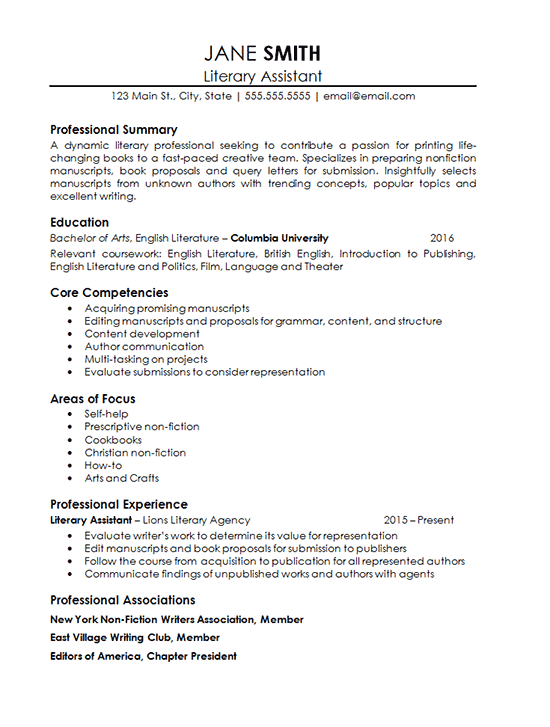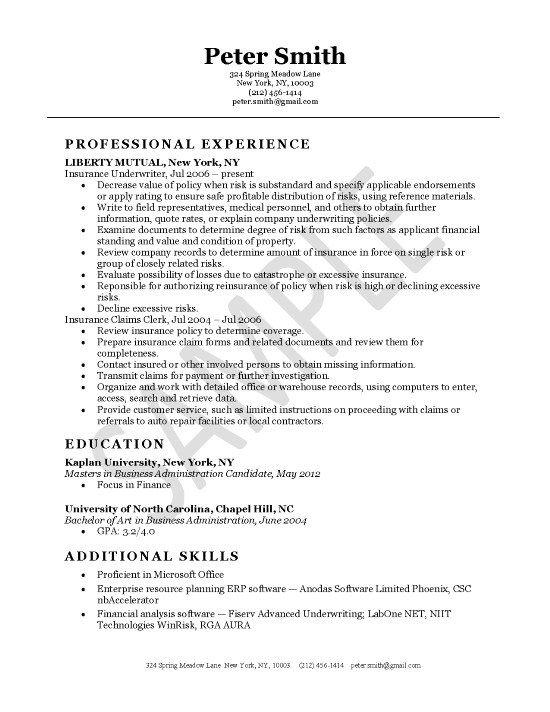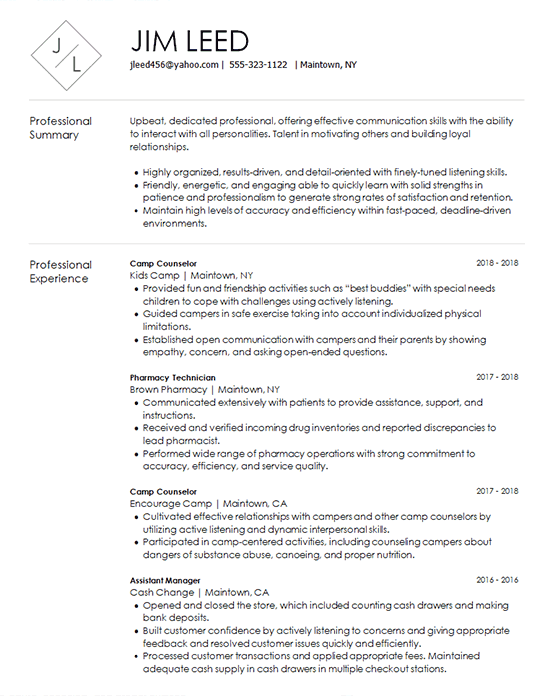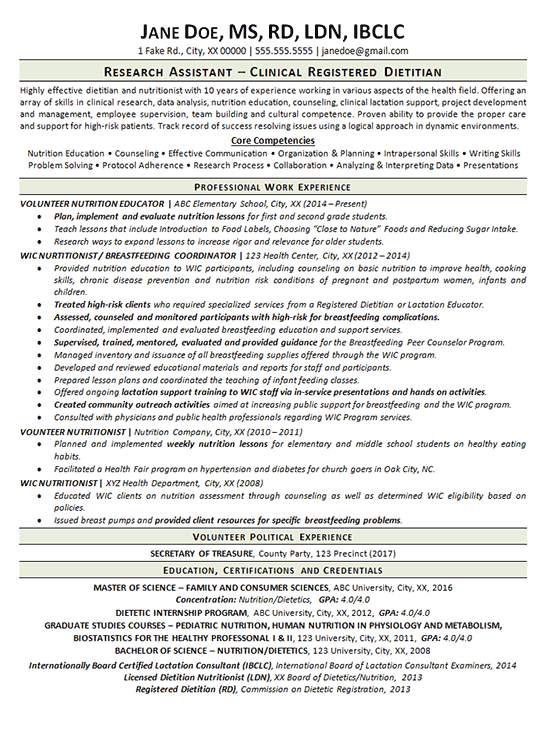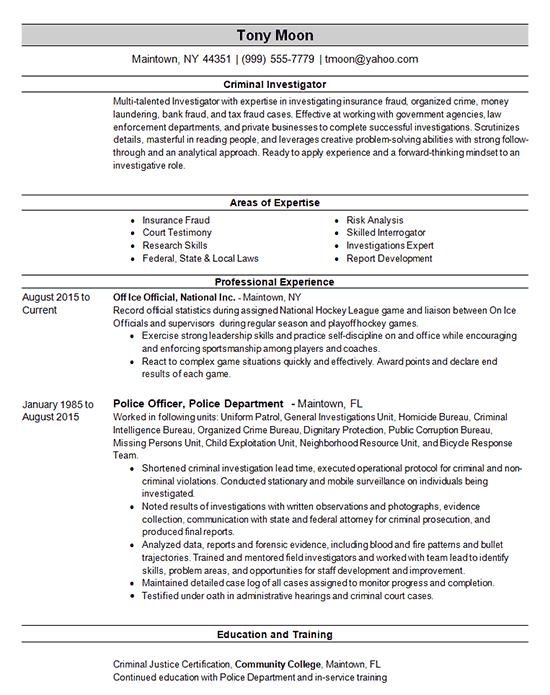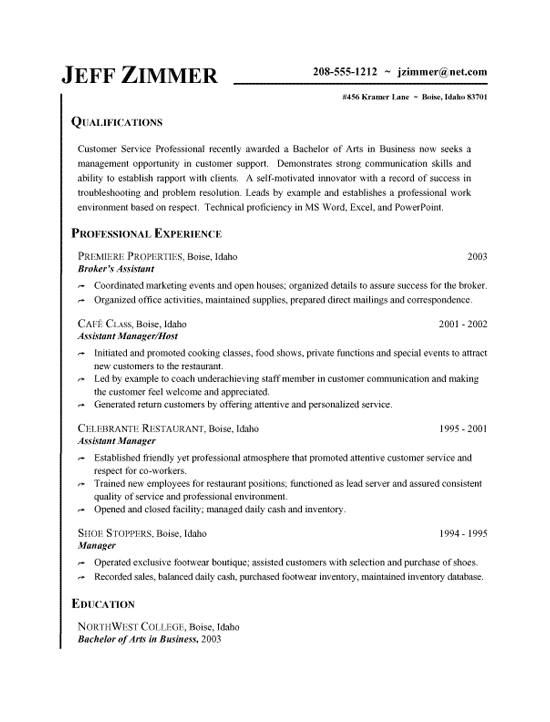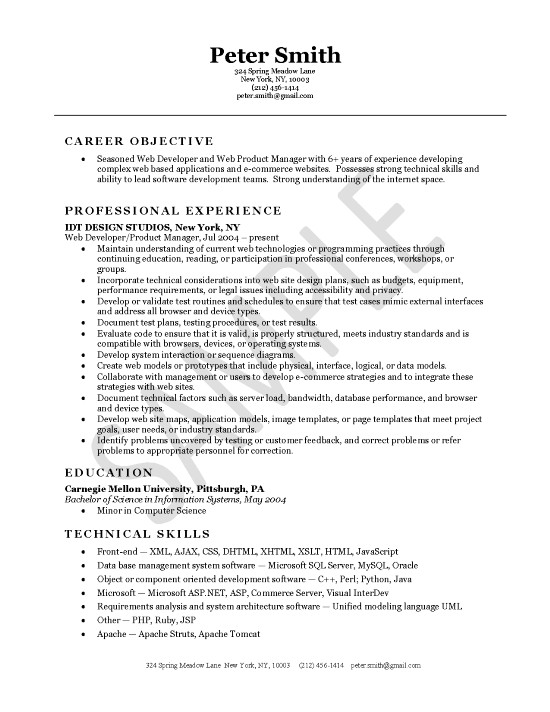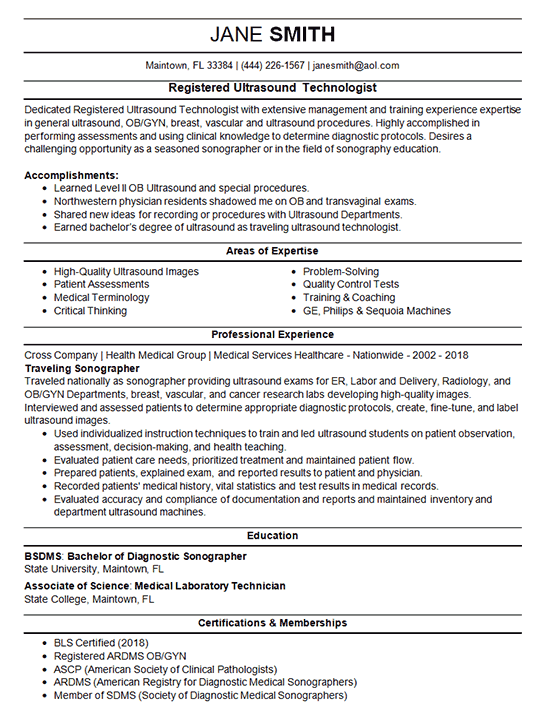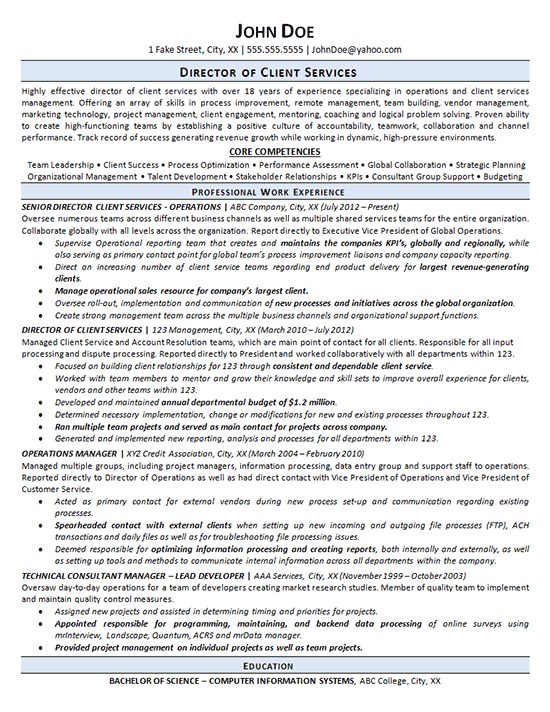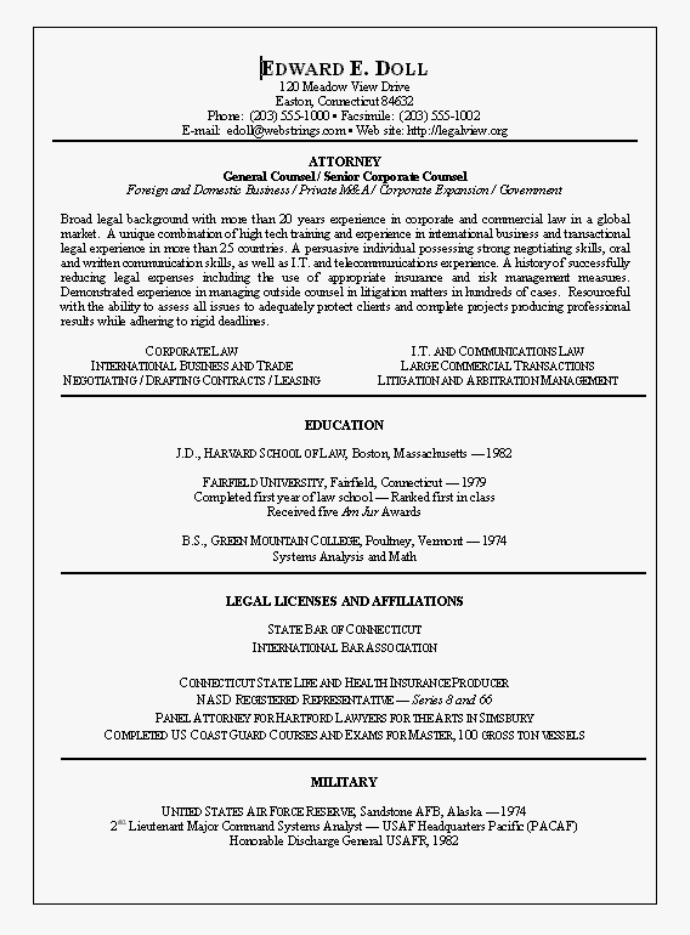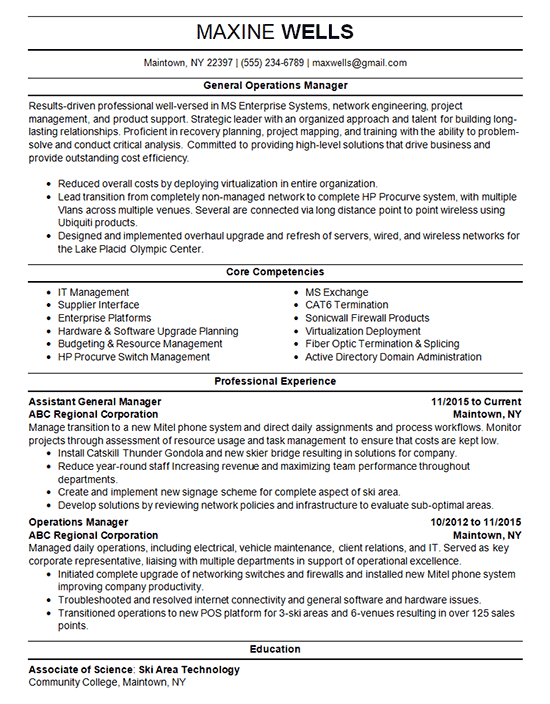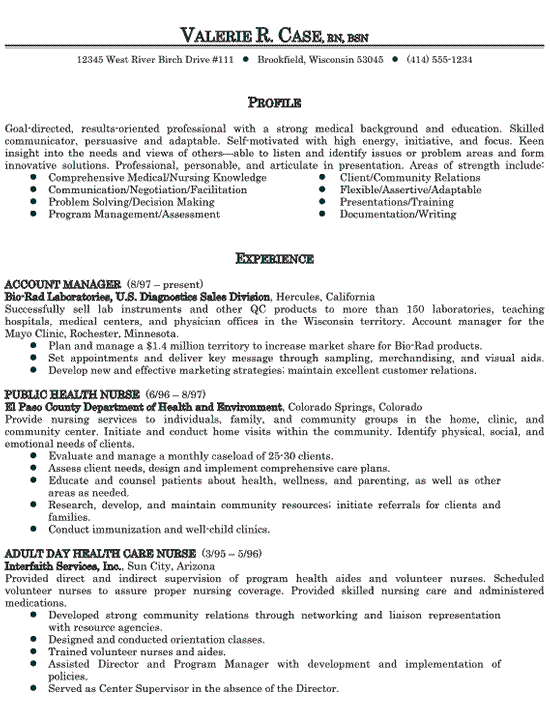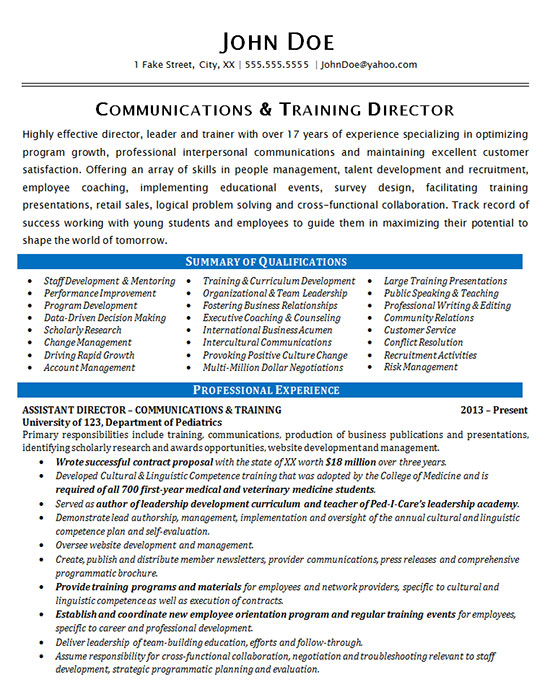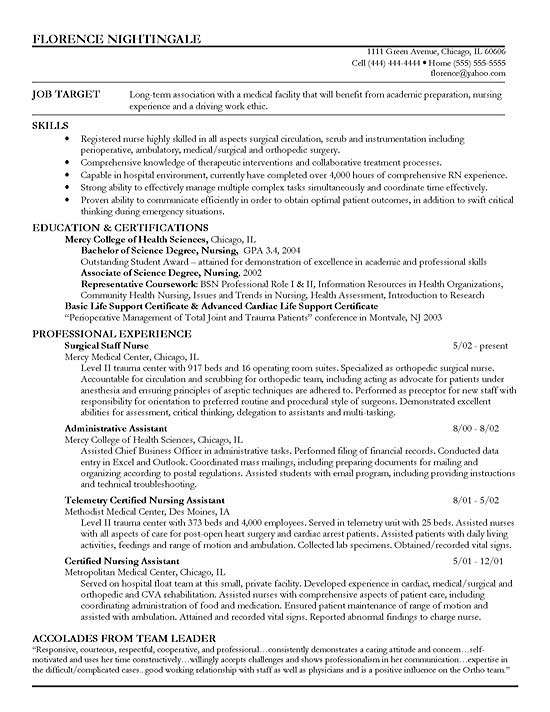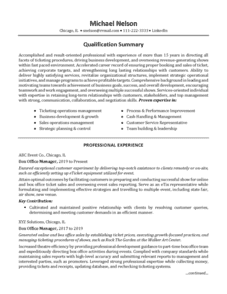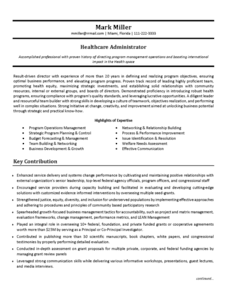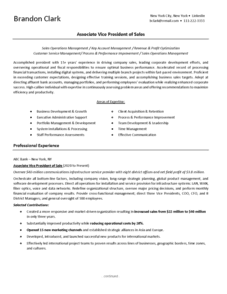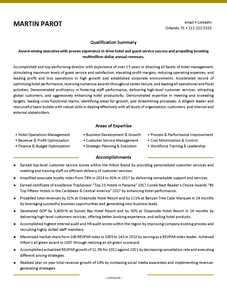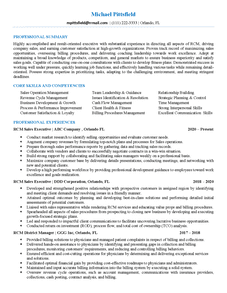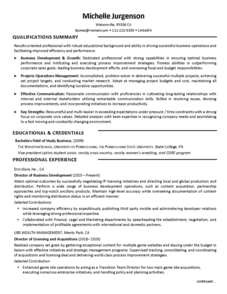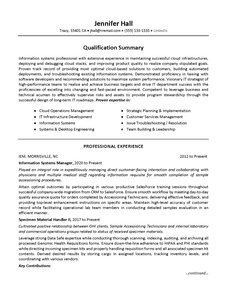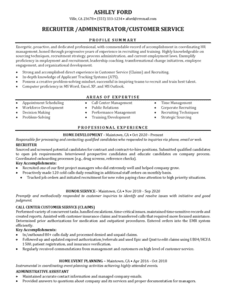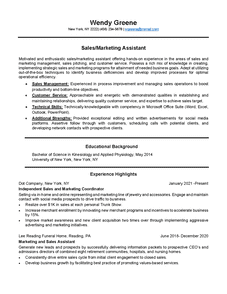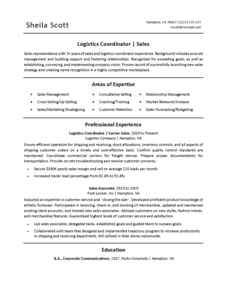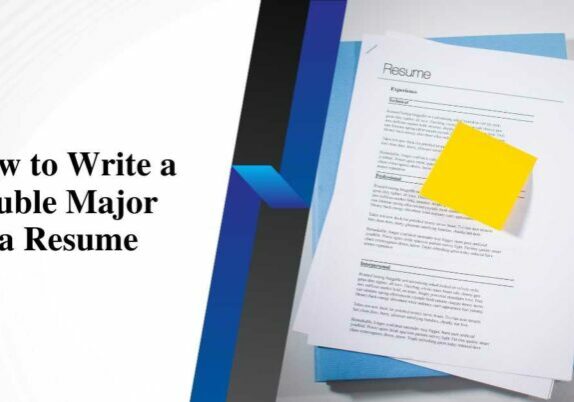Below you will find a functional resume example for a professional who is highlighting three major areas: administrative support, customer service and management.
This sample starts with a summary of qualifications to put emphasis on skills in customer service, word processing, computers, accounting, data archiving, office, telephone reception and problem-solving.
Rather than listing specific details, the job seeker lists responsibilities and achievements under the three main highlighted areas. The employment history is simply listed underneath the functional areas followed by education, training, and other complementary sections.
Functional Resume Writing Tips
Imagine a puzzle with many pieces scattered on a table. Each piece represents a different skill or qualification you possess, but it can be challenging to connect them in a way that makes sense to potential employers.
This is where a functional resume comes in. It allows you to showcase your abilities and accomplishments in a way that emphasizes your strengths rather than simply listing your job titles and dates of employment.
Using a functional resume example, you can highlight your expertise and demonstrate how your skills can be applied to various roles and industries. This format is especially beneficial for those in technical or skill-based professions and career changers who may not have a traditional employment history that aligns with their desired field.
However, it is essential to understand the advantages and disadvantages of a functional resume and to provide context for your accomplishments to avoid any confusion, skepticism, or red flags from recruiters.
What Is a Functional Resume?
The functional resume format highlights skills and talents related to the job and includes sections for contact information, professional summary, skills, and experience. This format is particularly suitable for individuals with solid skills or education and is commonly used in technical or skill-based professions.
Unlike a chronological work history resume focusing on work history and experience, the functional resume format shifts the focus to skills and competencies. One advantage of the functional resume format is that it allows for a more flexible work experience presentation.
For example, suppose you have gaps in your past employment history or have worked in different industries. In that case, a functional resume can help you emphasize transferable skills and downplay irrelevant work experience. However, it’s important to note that functional resumes may not be suitable for all job applications, particularly those that require a specific work history or industry experience.
You can use a template or design your format to create a functional resume. Functional resume examples and templates are readily available online and can be customized to suit your needs. When filling out the skills section, include accomplishments demonstrating your abilities.
Remember that the purpose of a functional resume is to showcase your skills and talents clearly and concisely and to highlight how you can contribute to an employer’s objectives.
When Should You Use a Functional Resume?
You might consider this option if you want to showcase your skills and education without focusing on your job history. This resume format emphasizes skills and talents related to the job title rather than a sequential employment history list.
A functional resume might be the right choice if you’re a job seeker who wants to downplay gaps in employment or highlight transferable skills. When considering when to use a functional resume, it’s essential to recognize that this type of resume may not be suitable for every job application. Employers often want to see a detailed employment record or know specific job duties.
However, a functional resume may be a good choice if you are changing careers or have diverse skills that might not be apparent from your work history. A combination resume is another option that might work well for job seekers who want to highlight their skills and work history details. This type of resume combines elements of a functional format and a chronological resume.
Ultimately, deciding what type of resume to use depends on your unique situation and the job requirements you are applying for. Consider the job description and tailor your resume accordingly, paying particular attention to the skills section and ensuring it highlights your most relevant qualifications.
The Pros and Cons of a Functional Resume
If you’re considering a functional resume, it’s crucial to weigh the pros and cons. Recruiters may not be fond of functional resumes and prefer a chronological format highlighting your work experience.
Additionally, some applicant tracking systems may struggle to read your resume if it’s not in a traditional format. However, a functional resume can be advantageous if you want to hide employment gaps or if you’re looking to make a career change and want to emphasize your transferable skills.

recruiters don’t like functional resumes
Cons
Recruiters Don’t Like Them
Recruiters aren’t fond of functional resumes, so it’s essential to consider their potential drawbacks before choosing this format. One reason is that functional resumes often rely heavily on keywords, making them appear generic and less personal. Additionally, recruiters may view functional resumes skeptically, especially if there are significant gaps in your job history or the job seeker seems to be hiding something.
Another drawback of functional resumes is that they can make it difficult for recruiters to understand a job seeker’s relevant skills and experience quickly. Traditional resumes typically list job titles and responsibilities in sequential order, which helps recruiters see a candidate’s career path more clearly. On the other hand, functional resumes often focus more on skills and accomplishments, making it harder for recruiters to see the big picture.
This can decrease job seekers’ chances of getting an interview since recruiters may be less likely to understand their qualifications fully.
Machines Can’t Read Them
You may be surprised to learn that automated applicant tracking systems often struggle to properly read and analyze resumes that deviate too much from the traditional chronological format. If you choose a functional resume format, you risk getting important information lost in translation.
These systems are programmed to look for specific keywords and phrases in the work history section, usually organized in reverse order in a chronological resume. If your functional resume doesn’t follow this same structure, it may not be properly scanned by the machine.
However, this doesn’t mean you should avoid using this kind of resume altogether. Instead, it would be best to balance showcasing your skill set and adhering to the standard format that hiring managers, and automated systems are accustomed to.
Ensure you thoroughly read the job description and incorporate relevant keywords and phrases throughout your resume. Additionally, consider including a brief work history section that follows a chronological format, even if it’s just a condensed version.
By doing so, you can ensure that your functional resume is visually appealing and easily readable by machines and human readers alike.
Pros

employment gaps
They Can Hide Employment Gaps
Hiding employment gaps can be achieved with a well-crafted resume emphasizing skills and achievements. A functional resume may help those with holes in their employment background or who have changed careers. This format is designed to highlight skills and achievements rather than job titles and dates, making it easier to downplay gaps in employment or highlight transferable skills.
Using a template can help you create a polished and professional resume if you’re a recent graduate or changing careers. Many free templates are available online to guide you through creating a well-organized and visually appealing resume.
By focusing on your skills and achievements rather than your work history, you can present yourself as a strong candidate for the job you’re applying for, even if you have gaps in your job history.
Advantageous to Career Changers
Now that you know how a functional resume can help you hide employment gaps, let’s discuss how it can benefit career changers like you.
Using a functional resume format can highlight your qualifications and skills rather than your work experience, making it an excellent option for recent graduates or those transitioning into a new field. With a skills-based resume section, you can showcase how your previous experience and volunteer work has prepared you for your new career path.
Instead of listing your work history in reverse chronological order, you can highlight the skills and experiences most relevant to the job you’re applying for. This can help you stand out to potential employers and make a strong case for why you’re the best fit for the position, even if you don’t have direct experience in the field.
Should You Use a Functional Resume in Your Job Search?
If you’re considering a functional resume for your job search, it’s important to weigh the positives and negatives before deciding on a format.
A functional resume is a skills-based resume that highlights your strengths and abilities related to the job you’re applying for—this type of resume benefits career changers and those with gaps in their employment history.
One advantage of a functional resume is that it allows you to highlight your skills and accomplishments rather than just listing your employment dates in reverse chronological order. However, providing context for your skills by including specific examples of how you utilized them in your previous roles is essential.
Additionally, some employers may view a functional resume as lacking in traditional employment history, which could make you appear less experienced than other candidates. Therefore, it’s important to carefully consider the type of job you’re applying for and whether a functional resume is the best fit for that position.
When writing a functional resume, focusing on the most relevant skills to the job you’re applying for is essential. Use the example of a functional resume as a guide to help you organize your information clearly and concisely.
Remember to include your contact information, a professional summary, skills, and experience. By highlighting your skills and accomplishments, you can increase your chances of landing an interview and, ultimately, the job you want.
Functional Resume or Chronological Resume: Which Should You Use?
Deciding between a chronological or skills-based resume can challenge job seekers.
A chronologic work history is the most traditional and conventional resume format, listing job experience in reverse-chronological order. This format works well for those with a strong employment history and consistent career progression.
On the other hand, a functional resume emphasizes skills and abilities over work experience. This format is ideal for those with gaps in their employment history or looking to transition into a new field. However, this format may not be as effective in landing interviews as a chronological resume.
A combination format may be a good compromise if you’re considering a functional resume. This format combines chronological and functional resume elements, highlighting work experience and skills.
You can easily create a combination resume using a free resume builder or select a combination format from various online resume templates. Ultimately, the key is to choose the format that best showcases your skills and achievements to potential employers.
What To Use Instead of a Functional Resume
Now that you understand why recruiters may not be fans of the functional resume, it’s important to know your alternative options.
One popular choice is the chronological layout, which lists your work experience in reverse chronological order. This enables hiring managers to see your relevant experience and progression in your career. Use bullet points to highlight your accomplishments in each role, and tailor your resume to the job posting to show why you’re a good fit.
Another option is the skills-based resume, which focuses on your abilities and competencies rather than your work history. This format may be more suitable for individuals who are changing careers or have gaps in their employment history. In this type of resume, the education section is still important, but it is listed after the skills section. Include examples of how you’ve used your skills in previous roles to show your potential value to the employer.
Lastly, you could consider a hybrid resume, which combines elements of both functional and chronological formats. This format allows you to highlight your key skills and accomplishments while providing context for your career gaps and history. Use a professional summary to tie everything together and show how your skills and relevant experience align with the job posting.
Regardless of your chosen format, showcase your strengths and clarify why you’re the best candidate.
Conclusion
Congratulations! You’ve successfully learned about functional layout resumes and when to use them. While this format can highlight your skills and education, it may not always be the best choice.
It’s essential to consider the pros and cons and decide what will work best for you and your job search. Remember, a functional resume can be an excellent tool for career changers and those in technical professions. Still, providing context for your accomplishments and emphasizing hard and soft skills is essential.
Consider a combination or hybrid resume if you’re unsure which format to use. In the words of Maya Angelou, “I’ve learned that people will forget what you said, people will forget what you did, but people will never forget how you made them feel.” Your resume is no exception.
Ensure it showcases your skills and experience and leaves a lasting impression on the recruiter. Good luck with your job search!

